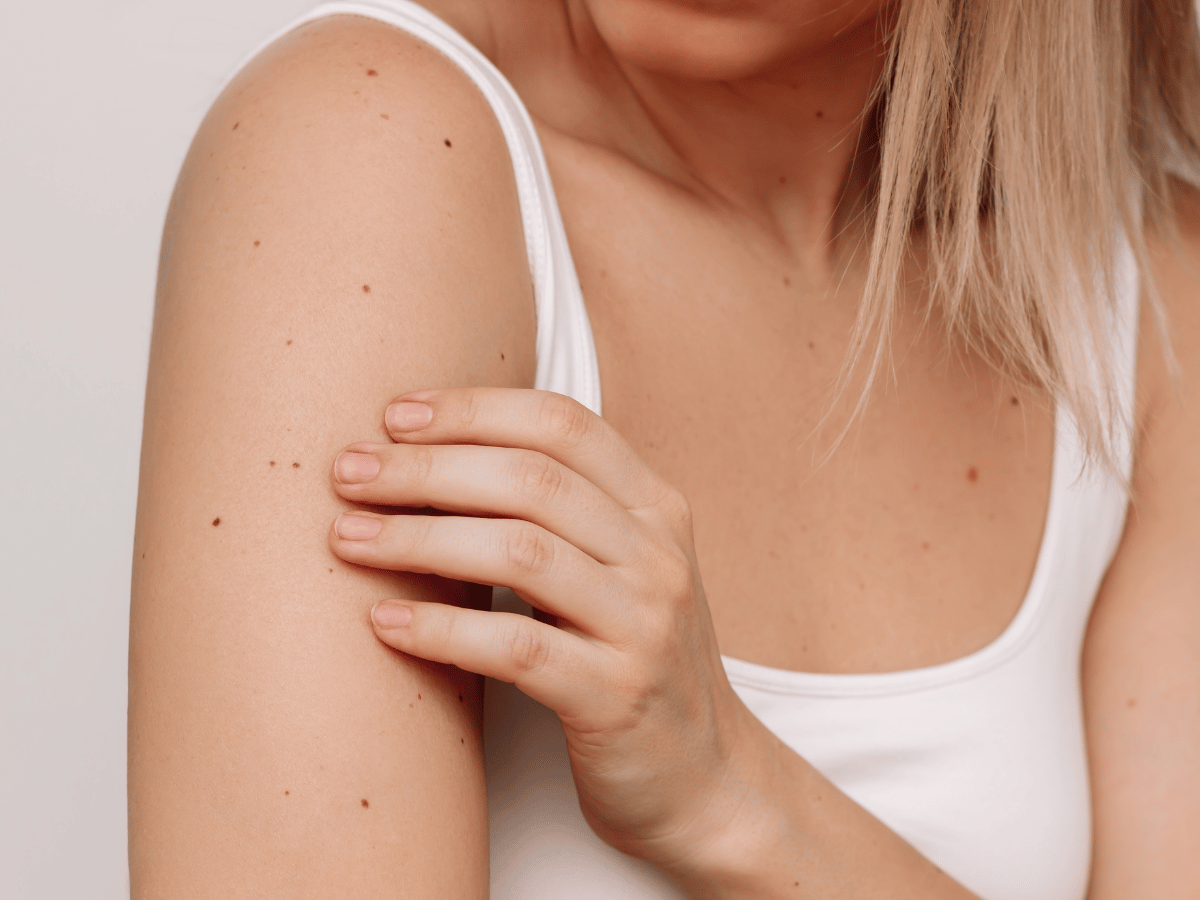What Are Birthmarks?
Birthmarks come in various shapes and sizes, and while some of us love our birthmarks, others may feel less confident about them. If you find yourself in the latter group, know birthmarks can often be treated with the help of a dermatologist, reducing their appearance and boosting your confidence.
At Academic Alliance in Dermatology, we provide the latest treatments for birthmarks, helping to ensure the best possible care and results. Our experienced providers have been at the forefront of birthmark treatments since our founding, and we continue to stay up-to-date with the newest advancements in this field.
TYPES
Strawberry Hemangioma
As its name suggests, this birthmark looks like a strawberry-colored lump. It often grows quickly, usually until a child is four to six months old. However, most strawberry hemangiomas disappear on their own, leaving little evidence it was there in the first place. According to the American Academy of Dermatology, about 10% disappear by the age of one, and 90% are gone by the time a child is 10 years old.
Port-wine Stain
These birthmarks are dark red in color and are usually found on the face or hands, though they can occur on other body parts. Unlike strawberry hemangiomas, port-wine stains don’t tend to fade away over time. In fact, as the child grows, this birthmark often grows as well. Fortunately, there are treatments available that can reduce the appearance of these marks by lightening or removing them.
Mongolian Spot
This birthmark is slightly raised and typically found on the lower back or buttocks. This type of birthmark appears more often in darker-skinned individuals and usually fades away between ages one and five.
White Spot
This type of birthmark is a little different than the others, as it’s white or lighter than your skin color. They can vary in size and location but are most commonly found on the face, neck, lower back, or arms. These birthmarks don’t typically need treatment and usually disappear as the child grows.
Café-au-lait Spot
This birthmark is usually larger than other types, and it’s light brown to dark brown in color. It’s very common and typically found on the trunk or limbs. Treatment isn’t necessary unless it’s causing discomfort or insecurities.
CAUSES
Birthmarks are caused by irregularities in skin development before birth. They occur when extra pigment cells or blood vessels cluster together, though the exact cause of these formations is often unknown.
SYMPTOMS
Birthmarks appear as distinct patches on the skin, varying in color, shape, and size. They can be pigmented, such as moles or café-au-lait spots, or vascular, like port-wine stains and hemangiomas, and may be present at birth or develop shortly after.
Visit Academic Alliance in Dermatology
Our team provides thoughtful, expert care for all your skin health needs. We are proud to offer the most advanced general, surgical and cosmetic dermatological services throughout Florida’s West Coast. Your best skin awaits.

